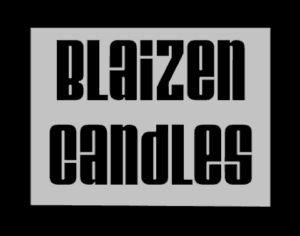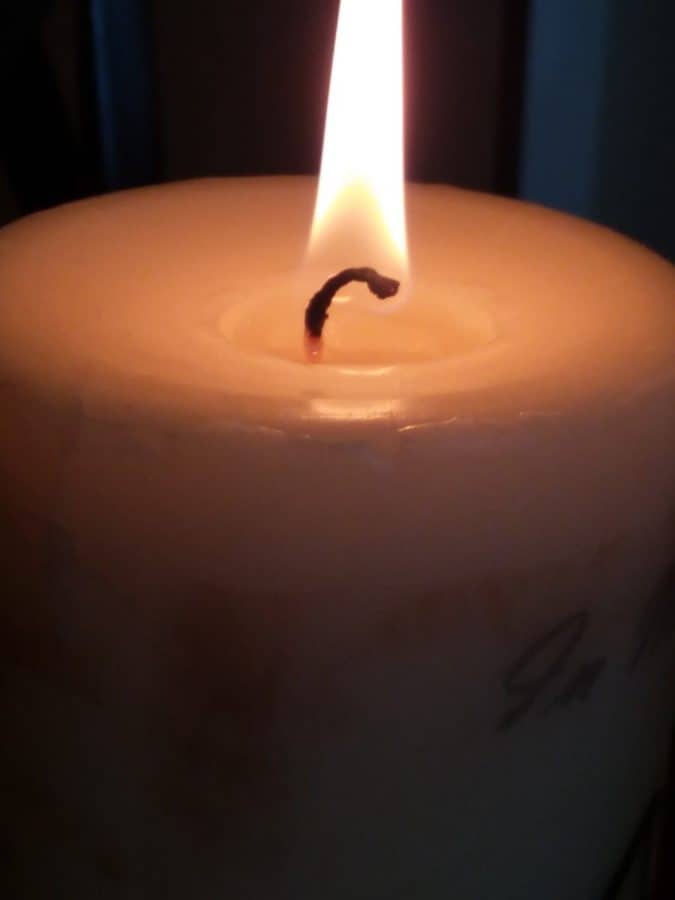The main reason people buy candles is for the scent, the aroma, the fragrance it gives off, in order to set the ambiance or mood of a room. Some people may just buy a candle, because it looks “pretty.” Candles can be simply a décor piece. Candles are also an essential item of a disaster/storm kit, because they provide light when the electricity goes out; but I think the main reason people buy candles is for aesthetics, to warm a room with a pleasant scent.
This is called aromatherapy. Aromatherapy is the technique of using our olfactory senses to help us relax and improve our mood. Candles are one way of using aromatherapy. The scent of the candle is the primary feature people are looking at when choosing a candle, so having a good fragrance throw is an essential characteristic of a quality candle.
How do you get a farther scent, or fragrance, throw in your candle? It comes down to how much fragrance oil you put in the wax. The general rule of thumb is 1 oz. of fragrance oil per 1 lb. of wax. However, the actual amount depends on the type of wax you are using and the type of candles you are making. There are also other characteristics that will affect the scent throw.
There are many things to consider when trying to get the perfect scent throw. There are many factors at play, which I will review. If you would like to learn more about how to get a farther scent throw and which wax works better with fragrances when you are making your candles, please read on to find out all about it.
What is Scent/Fragrance Throw?
Scent or fragrance throw refers to how far the scent of the candle travels. There are two types of scent throw: cold and hot/warm. Having a good cold scent throw is what helps people decide to make a purchase. However, having a good hot scent throw is what makes a satisfied customer.
The Two Types of Scent Throw: Cold vs. Hot
Cold throw refers to the scent of the candle when it is not lit. This is what people go by when they are considering purchasing a candle, because they cannot light the candle in the store to gauge the warm/hot throw, they have to simply go by the cold throw, whether they like the scent or not. Hot or warm throw is the scent of the candle when it is lit. When a candle is lit, it should have a farther throw than when it is not lit (cold throw). The hot/warm throw should be farther than the cold throw.
Factors that Affect Scent Throw
- The type of candle. Free-standing candles, like pillars and tapers, have a larger surface area than container candles. There is more overall surface area with pillars and tapers, because they are free-standing and not within a container. Candles that are within a container do not have much surface area that is exposed, only the top layer of wax, which will become the melt pool once lit.
- Wax pool. Pillar and large container candles normally create a larger liquid pool of wax, because of the size of the melt pool. The larger the liquid pool of warm, fragrant wax, the more scent will be pushed into the room where the candle is burning.
- Larger Wax Pool (Liquid Area) = Better Scent Throw (More Fragrant)
- Depth of the wax pool. The depth of the wax pool refers to how far down the melted wax will be. This is an important factor to consider, because a deep wax pool will allow more of the fragrance to evaporate into the air, creating a stronger scent throw. A shallow wax pool will not release as much scent into the air, creating a weaker scent throw. A good range for the prefect scent throw is ¼ to ½ inch.
- Type of Wax: Soy vs. Paraffin. Soy wax and paraffin wax are completely different waxes. Due to its chemical structure, paraffin seems to hold the fragrance oil better. Soy wax has a reputation for being very poor with holding scent.
- Type of Fragrance Oil. Some fragrance oils just do not blend well with certain types of waxes. Depending on the brand or company you purchase your fragrance oil from, the concentration will be different. Some fragrance oils will be less concentrated and others will be much stronger. So, of course, you will not need to use as much of the more concentrated oil. Also, using more fragrance oil does not necessarily mean it will increase the scent throw in a finished candle. Adding too much fragrance oil can lead to improper burning characteristics.
- Temperature to add the fragrance. Just like each type of candle wax has a particular melting point and pouring temperature, each type of candle wax has a particular temperature in which you will add the fragrance oil for the optimum scent. You don’t want to burn off the fragrance when you add it to the melted candle wax. So, make sure you know the correct temperature to add the fragrance oil. It can’t be too high. Also, if it’s too low of a temperature, it will not mix well either. It will not distribute (dissipate) itself uniformly within the candle wax.
- The Power of the Wick. Wick selection is important. The type of wick helps determine the flame, burn rate, and scent throw of the candle. If your flame is too small, you will not get a full melt pool, which will cause a poor scent throw. If your flame is too large, your candle could start to smoke, soot, or mushroom, which will affect the burning of the candle, clog the wick, and create a poor scent throw.
- Time to Harden. Once you pour a candle, it needs an appropriate amount of time to cool. The candle must be allowed to harden or set for at least 24 hours, but depending on the wax type, it may be longer. A paraffin wax candle can be lit after 24-48 hours and a soy candle is generally best cured (solidified) at 1-2 weeks.
How Much Fragrance Oil to Put in the Wax
The amount of fragrance oil you add into the wax will vary depending on the type of wax you are using and the brand or company of fragrance oil. A general rule of thumb is to put 1 oz. of fragrance oil per 1 lb. of wax. Of course, this will vary depending on the type of wax you are using and the brand of fragrance oil. The candle supply company you are purchasing from will have their own set of guidelines and suggestions for amounts.
What Temperature to Add the Fragrance Oil
The temperature at which to add the fragrance oil depends on what type of wax with which you are working. If you are working with soy wax, the temperature you will add the fragrance will be between 140-185 °F, depending on the brand. Most sources I’ve read recommend between 175-185 °F. However, the candle making kit I used said to add the fragrance at 140 °F. If you are working with paraffin wax, from what I’ve found it appears the temperature suggested is between 180-185 °F. However, for best results follow the guidelines suggested by the manufacturer.
Related Questions
What happens if you add too much fragrance oil to the candle wax? Adding too much fragrance oil can cause candle tunneling due to a not full wax melt pool, poor scent/fragrance throw. The wax and oil will not bond properly and the oil will actually be separated from the wax, so when the candle is lit and burned, you will see the fragrance oil separate and “leak” out from the wax. It could also clog the wick, causing mushrooming or smoking and a poor scent throw.
What is the fragrance flashpoint? The fragrance flashpoint is the temperature at which the fragrance oil can combust if exposed to a lighting agent, such as a spark or open flame. This number is used primarily for shipping purposes and is relevant information if making gel candles. However, when using regular wax, such as soy or paraffin, the oil will not ignite when added to the wax at this temperature. The oil only ignites when exposed to an open flame or spark.




